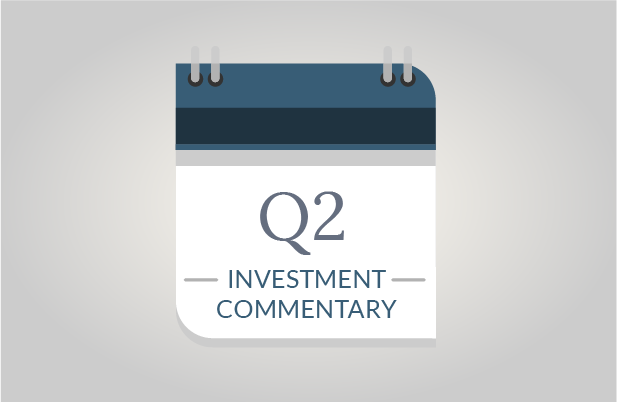SageVest Wealth Management has worked proactively throughout 2018 to advise clients how tax reforms may impact your wealth strategies and broader financial considerations. As the year concludes, we focus our attention on year-end tax planning in light of tax reforms.
Please contact us before December 10 to discuss any of the below opportunities. This allows adequate time for planning and implementation of these and any other appropriate tax-planning strategies.
1. Contributions To Retirement Plans
Pre-tax contributions to a company retirement plan, self-employed retirement account, or IRA remain one of the best ways to reduce your taxable income.
- If a company plan incorporates a matching program, your contributions can provide an immediate return. However, you may need to spread contributions throughout the year to qualify for maximum benefits.
- If you’re self-employed and considering a solo 401(k), be sure to establish the account before year-end.
- If you’re 50+, you’ll need to make a formal election if you wish to take advantage of catch-up contribution options.
Traditional contribution limits for 2018 and 2019 are as follows:
| Plan Type | Contribution Limits [1] 2019 | Contribution Limits [1] 2020 |
|---|---|---|
| 401(k)[2], 403(b), TSP Elective Deferrals | $19,000 | $19,500 |
| - Age 50+ Catch-up | $6,000 | $6,500 |
| Solo 401(k) & SEP IRA Plans | $56,000 | $57,000 |
| Simple Elective Deferrals | $13,000 | $13,500 |
| - Age 50+ Catch-up | $3,000 | $3,000 |
| Traditional & Roth IRAs [2] | $6,000 | $6,000 |
| - Age 50+ Catch-up | $1,000 | $1,000 |
[1] Subject to income limitations.
[2] Note that contributions to Roth accounts do not reduce your current year taxable income. However, all future earnings and withdrawals are exempt from further taxation.
Contact us with your questions, or if you’re self-employed.
2. Required Minimum Distributions (RMD)
If you’re 70 ½ or older, Required Minimum Distributions (RMDs) must be taken from eligible retirement accounts or inherited IRAs by December 31.
- If you turned 70 ½ in 2018, you may be able to defer your first RMD. Contact us to discuss whether this election is right for you.
- With increases to the standard deduction, you may wish to donate some or all of your 2018 RMD as a charitable gift (see next item).
3. Charitable Contributions
Tax-deductible charitable contributions can help reduce your taxable income. Contributions have typically helped to bolster itemized deductions, but new higher standard deduction amounts could make it difficult to gain tax relief from charitable giving. We offer the following suggestions:
- Outright Charitable Gifts: You can still make outright gifts to charitable organizations of your choice. Contributing appreciated securities (versus cash) allows you to receive a tax deduction and avoid a future capital gain tax liability from your investments. The charitable organization gets the same benefit, and doesn’t owe taxes upon receipt or sale of the shares. Always remember to replenish your investments with cash to stay invested, as appropriate.
- Charitable Gift Funds: If your planned contribution amount will not be claimed as an itemized deduction due to higher standard deduction amounts, consider aggregating two or more years of giving into a charitable gift fund.
- Charitable Giving: If you’re 70 ½ or older and can no longer claim itemized deductions, the Qualified Charitable Distribution provision allows you to donate up to $100,000 per person, per year, directly from your IRA. Charitable gifts from IRAs count towards your 2018 RMD, yet are excluded from your income, helping to reduce your taxable income.
Contact us for assistance with any of these gifting strategies, including selecting which strategy best aligns with your broader charitable and tax planning objectives.
4. Capital Gains
Realizing investment losses and minimizing capital gains can help reduce your tax burden. SageVest Wealth Management always reviews investment accounts on behalf of our clients. We encourage you to do the same across any personally managed accounts.
- Be aware that if you sell at a loss, you can’t re-purchase the same or any ‘substantially identical’ investment for 30 days, or you risk triggering a wash sale and forfeiting the loss. However, you might be able to find a replacement investment that’s somewhat similar, enabling you to stay invested while capturing the tax benefits.
5. Appropriate Tax Payments Post-Tax Reform & With Varying Income
Careful tax planning is recommended for anyone who:
- Has experienced a change in income.
- Is filing under a new status (married, single, head of household).
- May be losing itemized deductions (namely state and local taxes, and miscellaneous deductions).
- Traditionally makes estimated tax payments.
We recommend consulting with your tax preparer before year-end to determine if your taxes are potentially over- or under-paid, and if additional tax payments might be due. It’s better to know your tax standing now versus face a potentially unpleasant surprise, and potentially tax penalties, upon filing your taxes.
6. Health Spending
2018 is the last year that you can deduct qualified medical expenses exceeding 7.5% of your adjusted gross income (AGI). From 2019, the limit increases to 10%. You must itemize your deductions.
Example: If your 2018 AGI is $100,000 and your medical expenses total $12,000, you may deduct $4,500 ($12,000 – $7,500 or 7.5% of your AGI).
7. Health Funding
Both Flexible Spending Accounts (FSAs) and Health Savings Accounts (HSAs) allow you to pay medical expenses with pre-tax dollars. However, while unused dollars in HSA accounts can accumulate, most FSAs operate on a ‘use it or lose it’ basis.
- Check with your employer. Some FSAs allow a small carryover. If yours doesn’t, you’ll need to use up any FSA balance before year-end.
- You may also have to make elections for next year before year-end.
8. College Funding
If college savings is a focus for you, family or friends, consider funding a college savings plan before year-end. 529 plans offer tax-deferred savings, elevated annual gifting limits, and state tax deductions in many states.
9. Business Planning
As a business owner, it’s important to maximize year-end tax planning opportunities, e.g., timing of large expenses or personal compensation considerations. This year also brings potential opportunities with the new 20% qualified business income deduction available to some business entities. SageVest can assist in a collaborative role, but we recommend that you coordinate with your accountant regarding specific planning options.
As a reminder, establishing a retirement plan before year-end can dramatically help to reduce your taxable income. Contact us for assistance.
10. Roth IRA Conversions
While a Roth IRA conversion triggers taxable income, you might be able to benefit from a Roth conversion with little to no tax consequence if your income was lower or you had business losses during 2018. The amount converted remains tax-free for life. Your Roth conversion must complete by year-end.
- Conversions are now non-reversible, meaning careful planning is even more important.
11. Family Gifting
Effective planning can help you support family members financially, while maximizing tax advantages for yourself.
- For 2018, you can transfer up to $15,000 per person without triggering gift tax or taxable reporting requirements.
- Section 529 college savings plans offer tax-advantaged educational savings (see above).
- If you inherited an IRA this year, make sure you split the account between all beneficiaries before year-end.
- Larger gifting transfers require more advanced strategies and consideration of future tax changes. Please contact us to discuss.
Remember that your gifting considerations should always be planned, relative to your own financial security and broader family objectives.
12. Trust Income & Distributions
If you’re the trustee or beneficiary of a trust, review net trust income and distribution elections before year-end. While some elections to beneficiaries can defer into early next year, it’s best to be prepared for the coming year, especially as trusts reach the top IRS tax bracket of 35.0% at the threshold of $12,501+.
This year’s end-of-year tax planning decisions are particularly important in order to maximize your opportunities under the new tax laws. Please contact us to discuss any of these tax-planning matters, or your broader financial considerations.




